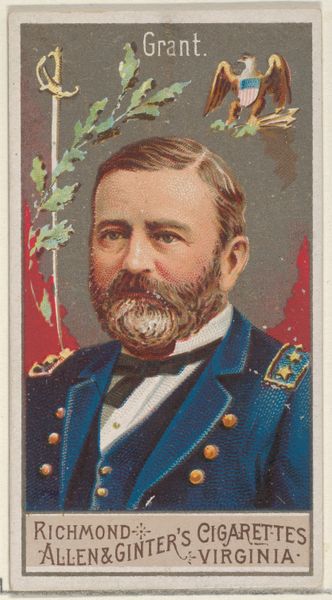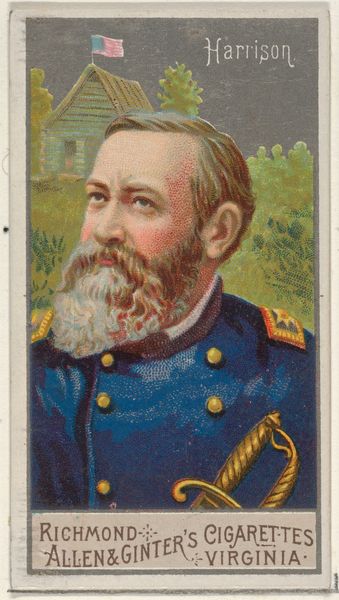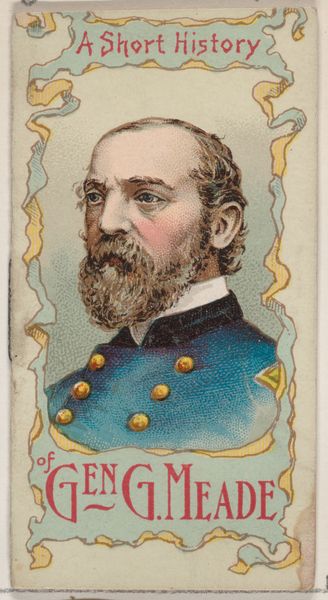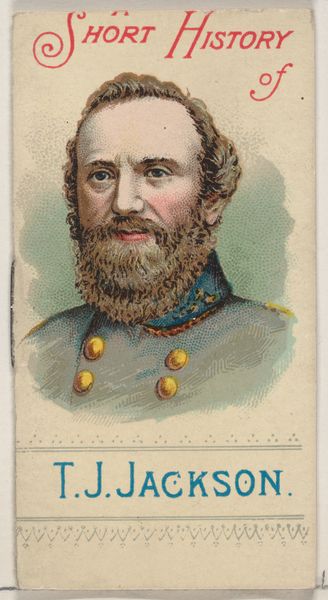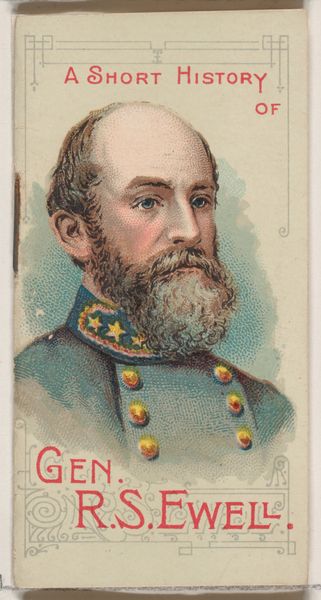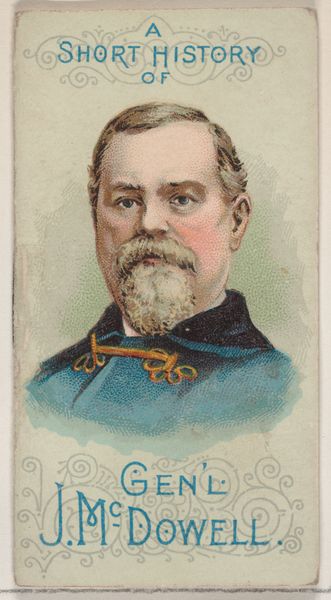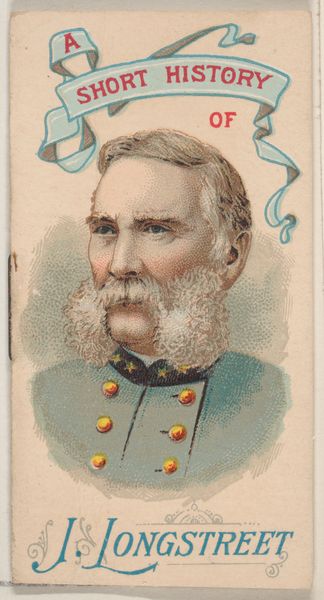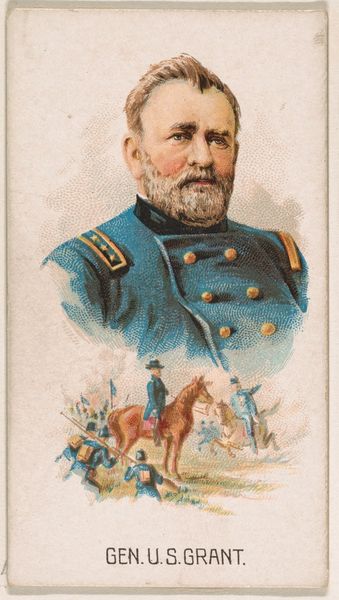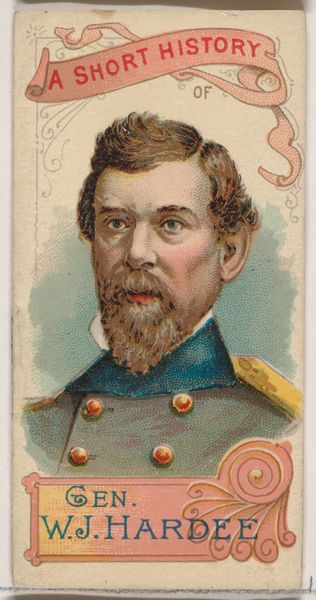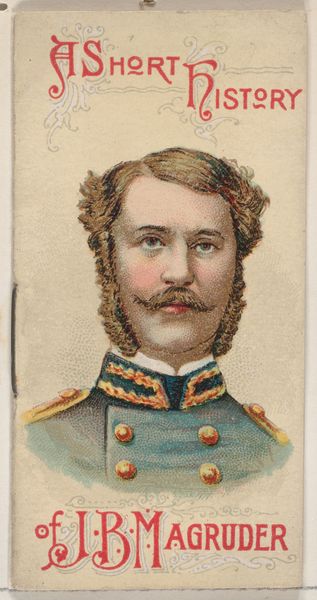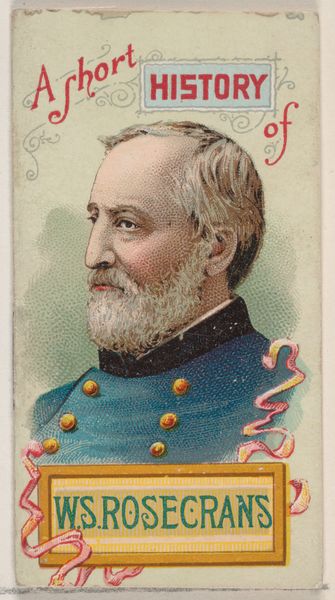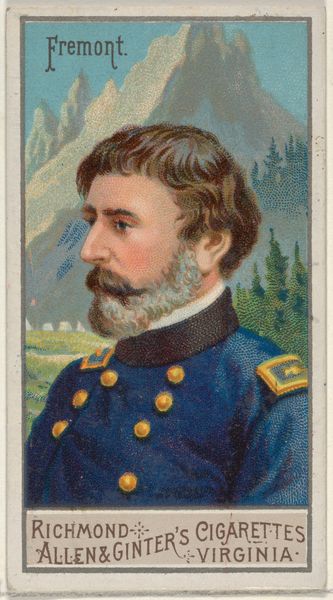
A Short History of General Ulysses S. Grant, from the Histories of Generals series of booklets (N78) for Duke brand cigarettes 1888
0:00
0:00
drawing, coloured-pencil, painting, print
#
portrait
#
drawing
#
coloured-pencil
#
painting
# print
#
impressionism
#
coloured pencil
#
genre-painting
Dimensions: Overall (Booklet closed): 2 3/4 × 1 1/2 in. (7 × 3.8 cm) Overall (Booklet open): 2 3/4 × 2 7/8 in. (7 × 7.3 cm)
Copyright: Public Domain
Curator: This captivating piece is one of a series of promotional booklets created for Duke brand cigarettes in 1888, entitled "A Short History of General Ulysses S. Grant, from the Histories of Generals series." Editor: It's…quaint, I suppose? The stippling gives it a curiously soft focus. The colors are muted, almost pastel. Curator: These cards were immensely popular, effectively embedding themselves in the collective American memory. Consider the period—post-Civil War, with Grant’s image carefully curated to manage his legacy amidst political debates. These images helped construct and reinforce certain narratives. Editor: The composition is conventional; it's a standard portrait bust framed by decorative text, and even smaller within a decorative frame inside the image itself. The details, though, are interesting: see the density of the hatching across Grant's face that attempt at conveying the texture of his beard and the subtle gradients that give the jacket depth. Curator: Indeed, consider that this wasn't high art intended for the museum but was, in essence, disposable advertising. The artistry elevates what was essentially propaganda, helping to solidify Grant’s place in the national pantheon during a period of intense reconciliation and revisionism. It suggests a deliberate strategy in branding national identity through commodity culture. Editor: Perhaps, but it also relies on certain artistic shorthands to achieve this "national identity." It is far removed from conveying any sense of three-dimensionality in the face, though, the eyes particularly seem flat and lifeless. However, one might see that is deliberate for a promotional commercial item, given mass printing, detail will easily lost. Curator: Precisely, it reflects the era’s attempts to create unifying figures, smoothing over more complex truths. By mass distributing it with everyday products, it shaped the understanding of history in accessible, consumable terms. Editor: An object lesson in how simplicity and mass replication are not necessarily drawbacks; rather, the image's simplicity became a virtue to a large population with relatively less formal training to read complexity from art. Well, I see something to it after all. Curator: It shows how even seemingly simple images played a critical role in constructing public memory, serving as vehicles for cultural and political ideologies that went far beyond the realm of commercial advertisement. Editor: Agreed. An unpretentious little window into art as part of a larger visual and socio-economic ecology.
Comments
No comments
Be the first to comment and join the conversation on the ultimate creative platform.
